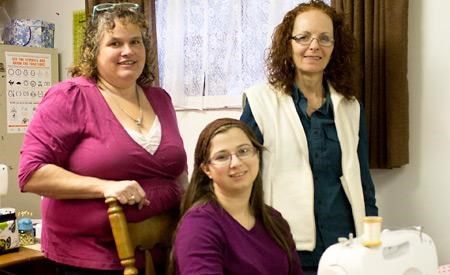Times may have changed since 1914, but one firmly grounded youth organization’s aim remains the same. 4-H continues to teach young people how to successfully meet the challenges of their lives and their communities.
What began 100 years ago as youth-oriented agriculture competitions has grown over time to become a national organization with clubs from coast to coast and more than 26,000 members and 8,000 trained volunteer leaders.
The stated goal of the 4-H movement in 1914 was “to train the heads and hands of the boys and girls; to give them broad and big hearts; to improve their health by giving them an interest in outdoor life; and to encourage on the part of all British Columbia citizens, a stronger and more intelligent interest in agriculture.”
Clubs were originally known as Boys and Girls clubs until they were renamed 4-H in 1952 to clearly represent the four Hs—head, heart, hands and health. Up until the 1950s the department of agriculture played a large role in providing project training and instruction in judging.
Mid-century, the organization began recruiting volunteer leaders to assist with clubs and focus shifted to self-development and citizenship by helping individual members improve their public speaking and judging skills. By the 1970s and 1980s, in addition to the perennial favourites of raising livestock and growing gardens, members’ project choices widened to include more crafts, outdoor living and emphasis on the environment, which made the program more accessible for youth who did not live on farms.
Last year, BC had 160 clubs with over 2,000 members and 600 volunteer leaders. Nine hundred and sixty-eight members lived on farms, 877 lived in rural areas and 424 lived in cities. Clubs had an average of 14 members and most popular projects in 2013 were raising cows, horses, poultry and sheep.
Members are from six to 21 years old and are grouped into four age categories: Cloverbuds for children six to eight, Junior Members for children nine to 12, Senior Members for teens and Special Projects for 20- and 21-year-olds. Most members are between 10 to 13 years old.
Powell River currently has two clubs, the community club which focuses on food preparation and sewing projects and the crazy critters club which focuses on small animal projects. Crazy critters, started in 2013, has about a dozen members who raise cavies (guinea pigs) and poultry.
The community club has had dedicated leaders throughout the years. Maureen Venables and Helena Rogers are currently the key leaders for the community club with both having more than 10 years’ experience. The sewing, baking and craft club has been running consistently for about 40 years. Pam Best, who died in 2005, was a driving force in keeping the sewing club going throughout the 1970s and 1980s.
“The clothing and craft unit of the club started about 1973 and it’s been continuous,” said Venables, who was a parent volunteer prior to being a leader. “Other clubs have come and gone, but there’s always been enough people to keep the sewing going.”
Venables said that another factor which has helped keep the sewing club going is the support and donated fabric it has received over the years from Galena Bay Fabrics.
In the early 1970s, Best had a horticulture club but there were also separate poultry clubs too, Venables added.
Large animals require a lot of fundraising and coordinating and when Dianne Skillen, leader of the Jinglin’ Spurs horse club, had to move out of town a couple of years ago, no one was available to replace her and the club folded, Venables said.
“There were still quite a few kids who wanted to continue,” she said. “As soon as we can find someone who is dedicated we can start it up again.”
The community club began more than a decade ago when the sewing, crafts and baking clubs were combined with mini-mechanics, a club to teach small engine repairs.
“The two guys running it just got too bogged down in the paperwork and wanted to focus on teaching,” she said. Venables and Rogers took over the registrations for the combined club.
4-H is always looking for parents to join as leaders, said Rogers. “You don’t have to be an expert to be a leader,” she added. “You just have to be willing to learn with the kids.”
4-H’s motto is learn to do by doing, said Rogers. “If we had someone who wanted to start a biking club, we would do that.”
BC has 35 different projects which range from adopting-a-grandparent to learning photography. In some provinces they have snowmobile clubs, Rogers added.
Volunteer leaders are recognized with a certificate from the BC 4-H Provincial Council for every five years of service. Venables received an award for her 10 years’ service earlier this month at Powell River Recreation Complex.
Each project club has a slightly different start date. Animal clubs start in January and February and members get their animals in the spring when babies are born and they work on their projects through to the fall. Sewing is considered a winter club and because of this the club starts in early October and goes through to June.
In October, 4-H participants present their animals, crafts and baking at the annual Powell River and District Agricultural Association’s Fall Fair. They also travel to compete on Vancouver Island in public speaking and judging events.
As children move up through the program they take knowledge tests on the project areas and in some cases that knowledge can be applied toward high school graduation credits.
Powell River 4-H members will join members from the island for a regional centennial celebration August 9, 2014 at the fairgrounds in Coombs, BC.
For more information about joining 4-H or volunteering for local clubs, readers can visit the organization's website.



